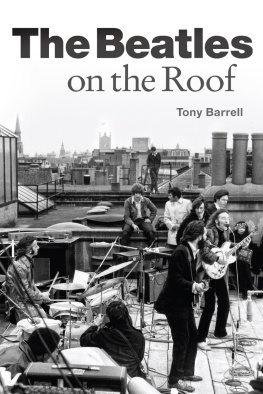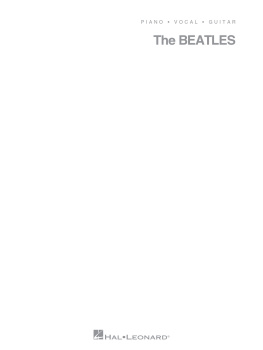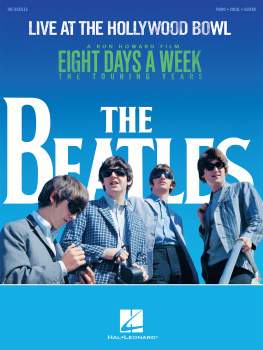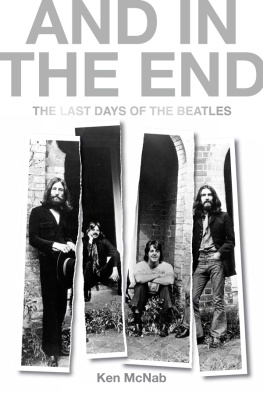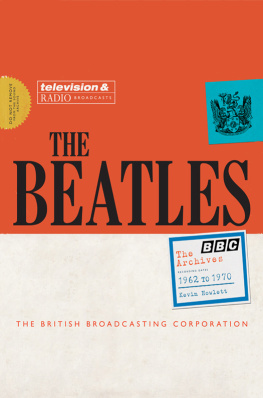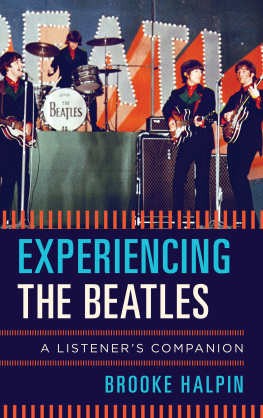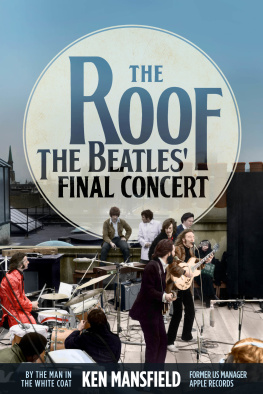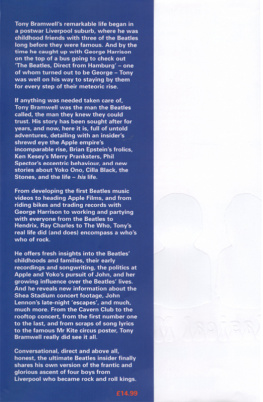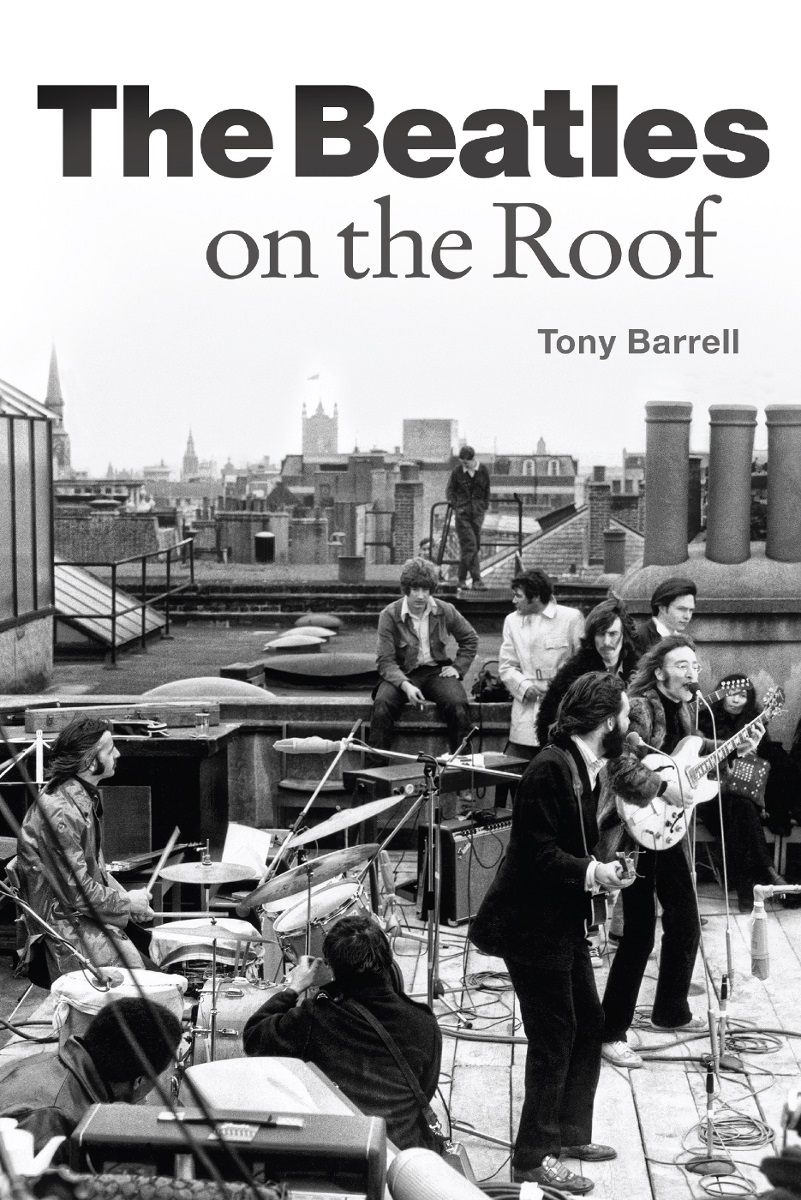CONTENTS
Guide
Pages
Copyright 2017 Tony Barrell.
This edition copyright 2017 Omnibus Press. (A Division of Music Sales Limited)
Cover designed by Michael Bell Design.
Picture research by Kate Booker.
ISBN 978.1.78558.578.4
Ebook Edition September 2017 ISBN: 9781783239696
Version: 2017-09-05
Order No.OP57343
The right of Tony Barrell to be identified as the author of this Work has been asserted by him inaccordance with the Copyright, Designs and Patents Act 1988.
All rights reserved. No part of this book may be reproduced in any form or by any electronic ormechanical means, including information storage or retrieval systems, without permission in writing from the publisher, except by a reviewer who may quote brief passages.
By clicking on the links in this eBook you, the reader, agree to Music Sales Ltd. collecting basic usage information to improve our service. This information is used solely for Music Sales Ltd. purposes and will not be used for marketing purposes or shared with third parties. If you have any questions, please email
Every effort has been made to trace the copyright holders of the photographs in this book but one or two were unreachable.
We would be grateful if the photographers concerned would contact us.
A catalogue record for this book is available from the British Library.
www.omnibuspress.com
Contents
The Beatles rooftop performance is often described as a spontaneous event: an iconic burst of rocknroll that came without warning out of a clear blue (or cloudy grey) sky. Its a nice story: that one random winters day January 30, 1969 the greatest band in the land decided on the spur of the moment to entertain London with some songs theyd just thrown together, and grabbed their instruments and tramped up to the very top of their Mayfair headquarters, which just seemed the natural thing to do, plugged in and blasted away.
It was spontaneous insofar as it only became a definite plan moments before it happened. Indeed, it came very close to not happening at all. But the music that The Beatles played on that day was shaped by a panoply of occurrences and influences, both within the lives of the group and in the wider world. And the concert occurred as the culmination of a long sequence of ideas, conversations and conflicts. Expert technicians and loyal roadies worked like Trojans to make it happen. The Beatles themselves had sweated over those songs for weeks. And behind it all was a story of discord, discontent and discarded dreams, and a year of madness. If The Beatles made it all look easy, well, that was one of the things they were good at.
Most people call it the rooftop concert, so thats what I usually call it. However, while it certainly took place on a rooftop, it wasnt really a concert. When you go to a concert, the musicians dont usually play a public sound check followed by a rehearsal of a song and then a proper version of it. But thats what The Beatles were doing: they were doing takes of their songs. Thats what you do in a recording session, which is what it was. Except that it was more than that, as well.
It was an outdoor recording session for an album, and it was filmed, because it was intended as the finale to a television show. So it was like a reality-TV version of a recording session, but transplanted from a comfortable studio to a lofty urban location in the depths of winter. Insanity!
In a way, it was just The Beatles being The Beatles, pushing the boundaries and making news again. Although they were still in their twenties (John Lennon and Ringo Starr were 28, Paul McCartney was 26 and George Harrison was 25), they had a lifetime of achievements to look back on. They had sold records by the lorryload, pioneered stadium pop concerts in America, been awarded MBEs, recorded a concept album, taken LSD, recorded instruments backwards, performed on the first ever global satellite TV show, started their own record label and swanned off to India to discover the meaning of life. Although they werent the first rock band to play on top of a building, the rooftop event was another of those achievements something else to put in the history books and give them a medal for.
It was also a happening, the kind of arty-but-really-a-bit-silly event that was terribly hip in the sixties. Happenings took many different forms: hippies might dress up as nuns and roll around in maple syrup, or 100 metaphysical poets might walk from John OGroats to Lands End while repeating the word trousers over and over again, and people would watch and feel somehow enriched by the experience. It was conceptual art. This particular happening was all about The Beatles appearing in public when many people thought they had split up, playing entirely new songs while withstanding the freezing cold, annoying the neighbours and resisting arrest by the boys in blue.
The rooftop event can be seen as a few other things as well. It was a bonding exercise for the group, a means of reminding each other why they came together in the first place. It was a mystic ritual to renew the spirit of the band after a period of personal disharmony and misfortune. And it was an anti-establishment prank, a wheeze to get the goat of their snooty Mayfair neighbours, especially the tut-tutting Savile Row tailors with their conservative tendencies.
It was also a kind of self-audition. They hadnt played live in public for about two-and-a-half years and were beginning to wonder if they could still do it, so here was the big test. In that respect, they showed enormous courage. If theyd failed, they knew the media would have been circling like vultures, dashing off nasty reviews and hatchet jobs with relish: The Beatles are finished; theyve lost their magic; did they ever have any magic in the first place, really? Have we all been conned? Were they really the Emperors New Clothes? It would have been like Magical Mystery Tour all over again, but worse. Fortunately, of course, they passed the self-audition.
And yet, despite its multifaceted nature, the rooftop performance is so often regarded in shallow, simplistic terms. On big anniversaries, when the year ends in a 9, it gets an article here and there and maybe a short piece on TV, most of them rehashing the same list of facts: it was on a roof, Ringo Starr wore his wifes coat, people stopped and stared, the police came and shut it down, John Lennon made a joke at the end. The reasons why it happened, and why it happened in the way it did, go largely unexplored.
Looking back on The Beatles career history, it becomes evident that the main story of the rooftop concert begins with the launch of their own company, Apple, in 1968. Most obviously, Apple gave them the actual roof on which they would ultimately perform, because this entire building was the companys new Mayfair headquarters. Moreover, the year 1968 saw both John Lennon and Paul McCartney establish new and lasting romantic relationships, which they would sing about on that roof. This was also the year in which the band embarked on their Get Back project, originally foreseen as a TV special for The Beatles (it later morphed into the Let It Be film and album), and the high point and culmination of that project was the rooftop session.
It seems artificial and unsatisfying to tell this story as if it occurred in a vacuum. It very much belongs to the closing years of the sixties, when the naive, blissed-out dreams of flower-power summers had already lost their lustre. This was a time when young people were marching for a whole range of causes: standing up for civil rights, womens rights and nuclear disarmament, and opposing the Vietnam War and other policies of old-fashioned, draconian governments. The Beatles, especially John Lennon, were committed to many of those causes, and Apple itself was a kind of pressure group as well as a business enterprise, seeking to find a new, more inclusive and creative form of capitalism for the world to follow.

